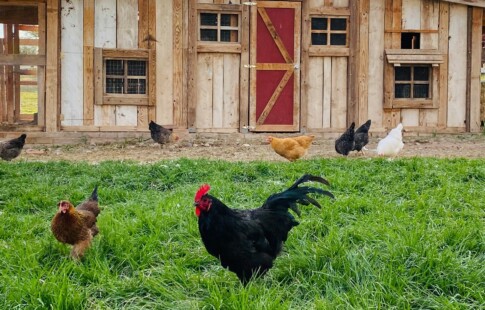
How Regenerative Agriculture Can Shape the Food System
We are reader-supported. When you buy through links on our site, we may earn affiliate commission.
The concept of agriculture has been around nearly as long as humanity itself, but within the last 100 years or so, we’ve started to employ industrialized agriculture techniques that damage the soil and make it harder and harder to grow crops in the same areas. In 2017, American farmers alone planted nearly 320 million acres of farmland using these industrial techniques. Most of those crops were corn and soybeans — foods humans only consume roughly 25 percent of.
Centuries ago, our ancestors relied on regenerative agriculture techniques to plant their crops. Recent studies have emerged to suggest these ancient techniques could help save modern agriculture and reshape the food system. What is regenerative agriculture, and what can it do for modern farming?
The Benefits of Regenerative Agriculture
First, what is regenerative agriculture?
This technique is how we used to plant our crops for centuries — in a way that mimics nature to minimize our impact on the land. Regenerative agriculture uses a minimum amount of tilling to preserve natural soil aggregation. It also naturally preserves soil fertility by using a technique called crop rotation. Instead of planting the same crops in the same fields season after season, farmers use alternating crops to restore nutrients, or even leave fields fallow for a season after sowing with compost, manure or other natural fertilizers to allow the soil to regain some of its natural nutrients.
The goal of regenerative agriculture is to be part of the land, rather than viewing it as yet another resource we use and discard.
Regenerative agriculture applies to raising livestock as well, by employing better grazing practices to prevent cattle or other animals from decimating the plant life in a localized area.
Regenerative Agriculture and the Food System
What can this old style of planting do for the food system as a whole?
First, it could increase agriculture-related industry profits. This push toward restoration has massive commercial applications. In China, a project to restore 3.7 million acres of degraded land not only lifted more than 2.5 million people above the country’s poverty line — it also increased grain production output by 60 percent, while improving everything from biodiversity to water use. Local incomes doubled, waterways cleared — and, most importantly for this poverty-stricken area, food supplies became more secure, reducing hunger and starvation.
The push toward this style of agriculture has also lead to countries around the world taking steps to create a closed-loop system — one that reclaims and recycles as many waste products as possible. In the EU, for example, many countries have started recovering phosphorus from solid waste and sewage sludge that can be used in agricultural applications.
It is also leading to an uptick in the demand for locally grown and sourced food products, as more consumers start to realize the effect their eating habits have on the environment. Major cities are starting to produce more food in metropolitan areas, in vertical farms and greenhouses that help supplement produce and food coming in from more distant areas.
Regenerative farming techniques also require fewer chemicals to create a comparable yield. Currently, only organic produce is certified to be free of artificial chemicals like herbicides and pesticides. Many of these chemicals aren’t necessary at all in a regenerative agriculture setting, making the crops healthier for those who consume them.
All in all, experts estimate the economic benefits of regenerative farming, both direct and indirect, could end up being worth more than $346 billion. We don’t need to continue this trend of destructive and toxic farming techniques that have cropped up over the last century to grow enough food to feed everyone. We only need to start looking backward to move forward.
Regenerative agriculture might be an old-fashioned method, but if we wish to continue to be able to harvest enough food to feed a growing population, it must also be the wave of the future. Experiences in China and other countries have shown regenerative farming isn’t just better for the environment, it’s better for the crops, increasing yield and improving local economies. It also helps us grow crops that are healthier and free from pesticides, herbicides and fertilizer, which could also have long-term beneficial effects on overall health and wellness.
Share on
Like what you read? Join other Environment.co readers!
Get the latest updates on our planet by subscribing to the Environment.co newsletter!
About the author
Jane Marsh
Starting from an early age, Jane Marsh loved all animals and became a budding environmentalist. Now, Jane works as the Editor-in-Chief of Environment.co where she covers topics related to climate policy, renewable energy, the food industry, and more.





